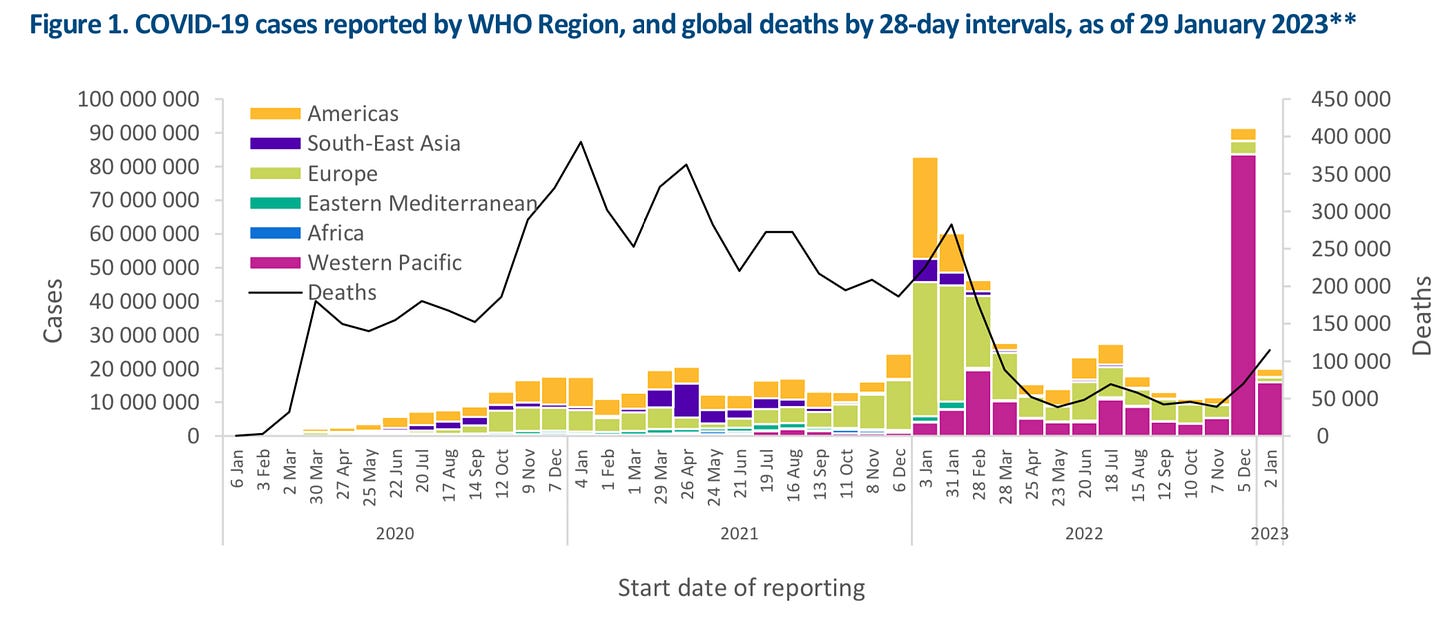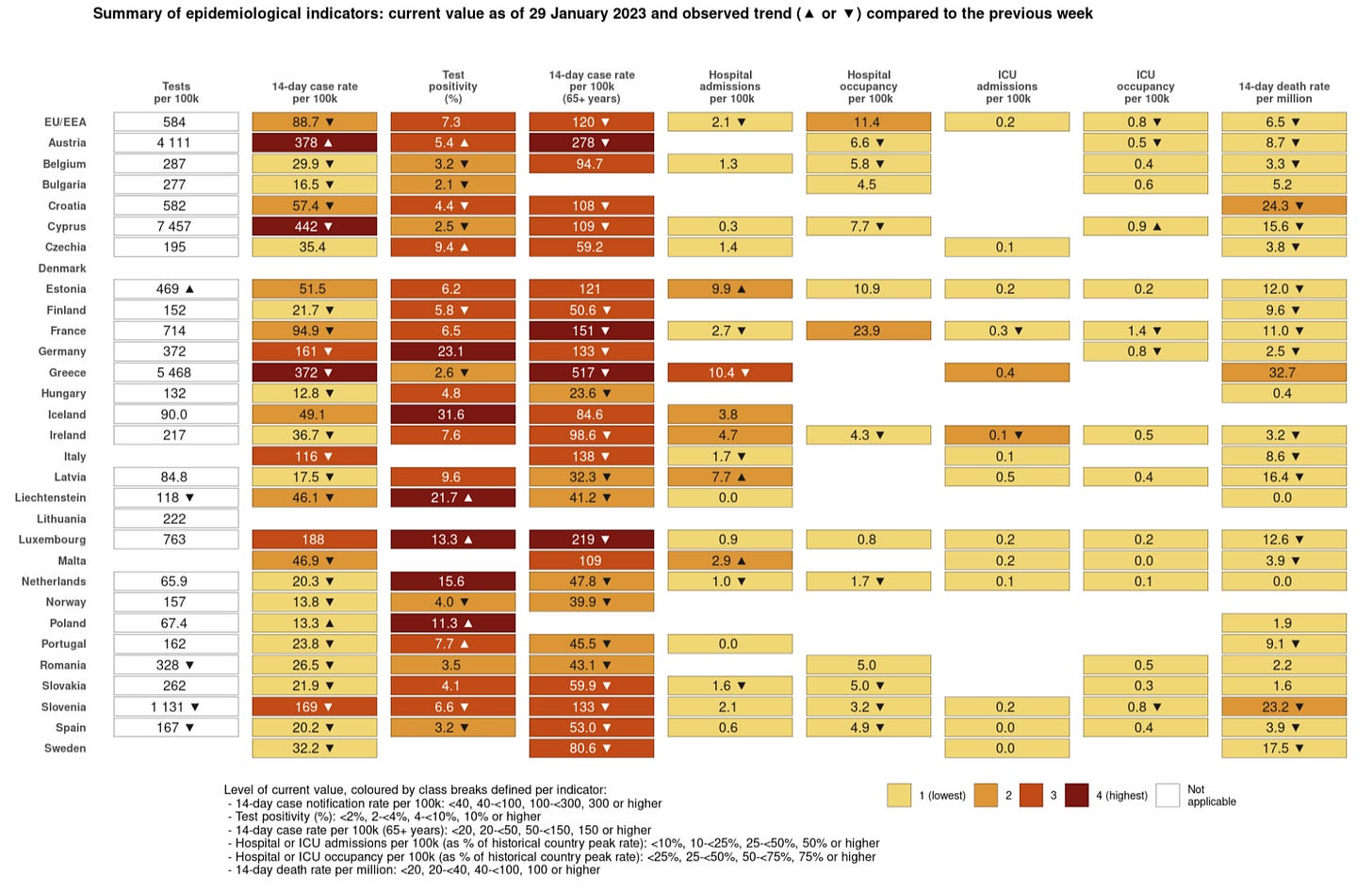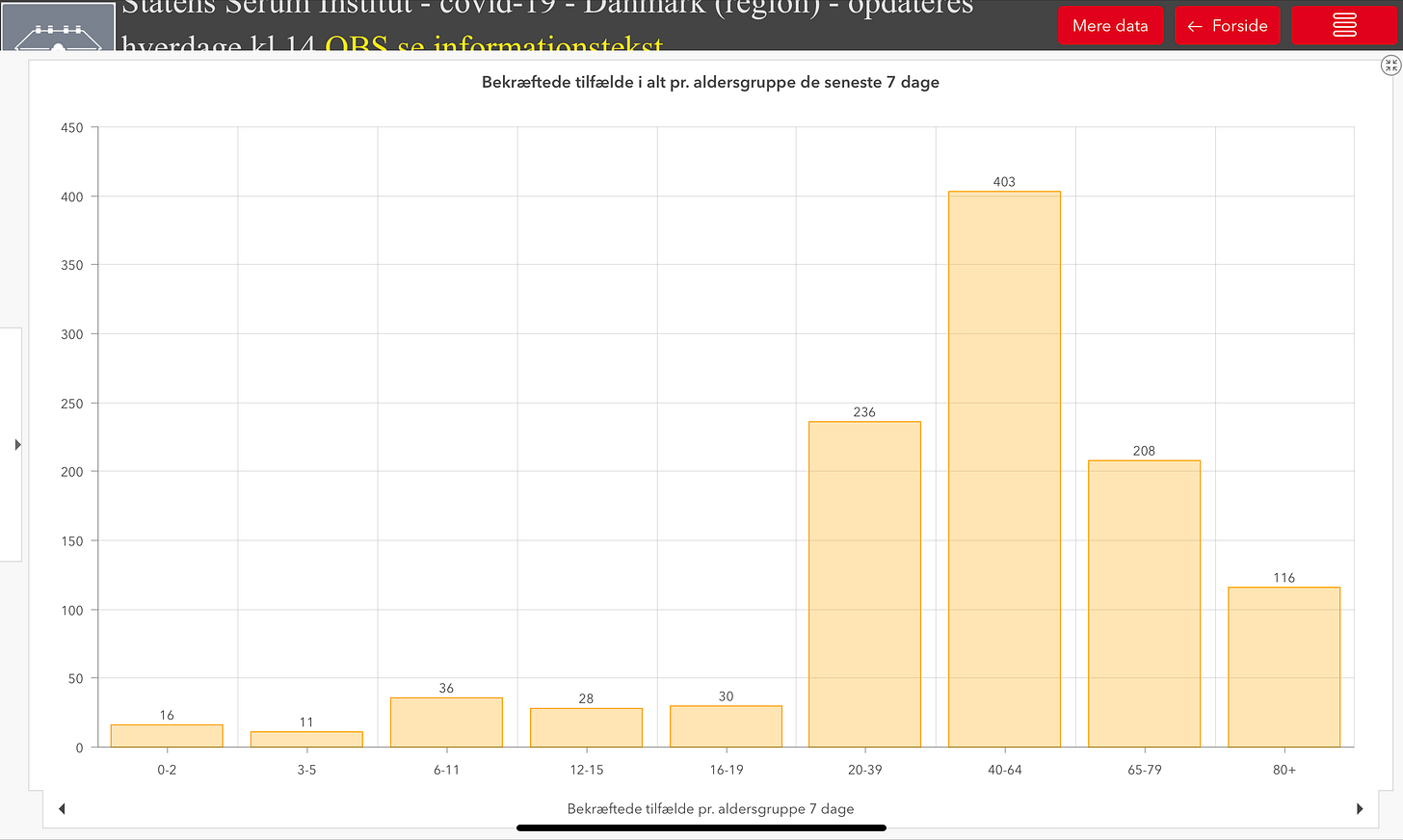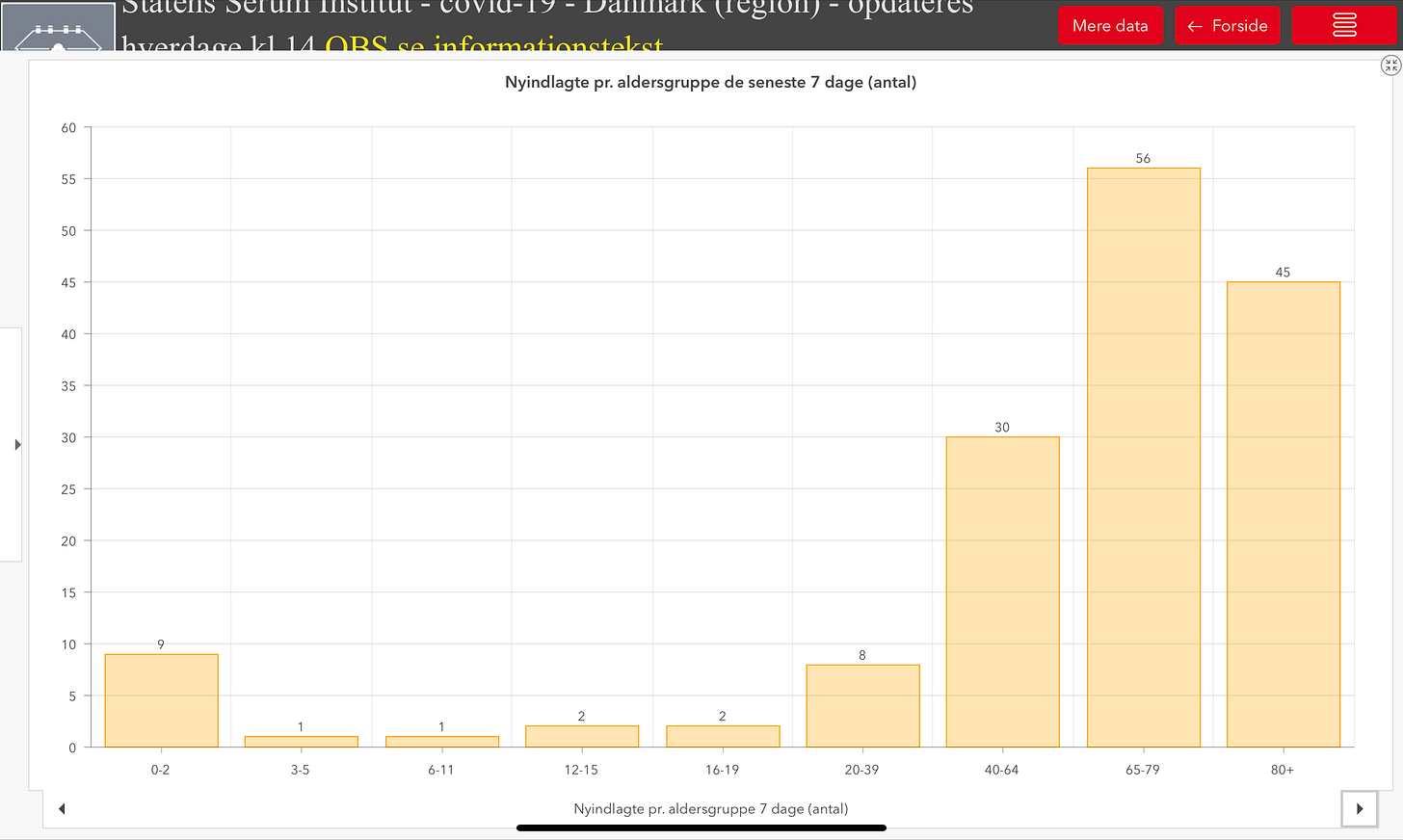🦠Pandemic🦠
🌎🦠
Global COVID deaths continue to rocket upward, thanks in large part to surging fatality numbers (likely understated) being reported by China. The latest global pandemic snapshot from the World Health Organization says there nearly 20 million new infections (-78%) and over 114,000 coronavirus deaths (+65%) in the last 28 days. The WHO says numbers are being dominated by a large wave of deaths in the Western Pacific Region, notably in China.
“Current trends in reported COVID cases are underestimates of the true number of global infections and reinfections as shown by prevalence surveys. This is partly due to the reduction in testing and delays in reporting in many countries.”
Among the six WHO regions, the Western Pacific saw a major (+173%) increase in COVID deaths. It was followed by the Eastern Mediterranean (+29%) and the Americas (+13%). On the other end of the scale, South-East Asia saw a 62% drop in fatalities. Africa was just behind (-45%) followed by Europe (-25%).
Along the individual countries, China reported 62,759 pandemic deaths (+244%), keeping in mind it is very likely the number of deaths has been underreported, while seeing an 85% drop in infection numbers. In the United States, even as the White House signals an end to the COVID state of emergency, it recorded another 14,625 American lives lost to the virus (+31%). Japan also remains a concern with 10,122 more coronavirus deaths (+46%).
The global health agency says the number of sequenced positive tests around the world has now dropped below 100,000. Of those, 99.9% were Omicron variants of concern. The top three most active variants around the world are BQ.1.1 (28.2%), BQ.1 (14.1%), and XBB.1.5 (11.5%). The WHO also notes dominant variants vary from region to region, with BQ.1.1 the most active in Africa, the Americas, and Europe. While XBB.1 is king in the Eastern Mediterranean and South-East Asia. For the Western Pacific, it is BA.5.2 that is in charge.
The WHO has repeatedly urged countries to increase COVID surveillance, test more, sequence more, and share all their information in order to better track pandemic developments and emerging variants. That advice continues to be ignored. Africa submitted a mere 332 sequences, South-East Asia had 389, and the Eastern Mediterranean was even worse with just 85. Europe only managed just over 40,000 sequenced positive tests, which would have been a slow day in any one European country at the height of the pandemic.
-
Infectious Disease Epidemiologist and WHO COVID lead Maria Van Kerkhove is reminding people, especially healthcare workers, to continue to be diligent with mask use.
“So our recommendations are to continue to wear masks when you are around others and in indoor situations. Certainly, for healthcare workers, masks or respirators, depending on the situation, that they are N-95s or FFP2s when they are caring for patients. Because the virus is circulating around the world pretty much unchecked right now. So we know the case numbers that are reported to us are low, which are underestimates, so the virus is circulating. Masks are part of the comprehensive package to control [COVID] transmission, to limit the spread, to protect you as an individual. And for health workers, this remains critically important, as well as other personal protective equipment. So our recommendations are still in effect.”
Kerkhove is again pleading with countries to double down on COVID surveillance (testing) and sequencing in order to help end the pandemic this year. She says vaccination also remains crucial, especially getting seniors over 60 vaccinated and boosted. She notes that 80% of the worldwide coronavirus deaths have been among elderly people over the age of 60.
🇪🇺🦠
COVID numbers in Europe are the lowest they have been in a year. That is according to the latest weekly pandemic assessment from the European Centre for Disease Prevention and Control. It says in the last week, case numbers across all ages, hospitalizations, ICU admissions, and COVID deaths have all dropped “to the lowest levels observed in the past 12 months.”
The weekly positivity percentage across Europe inched down from 7.3% to 7.1%.
The drop in coronavirus numbers was mostly reflected across the 28 individual EU countries except for Poland and Austria, which reported increasing COVID infection numbers. While four others, Cyprus, Estonia, Latvia, and Malta, reported either rising hospital or intensive care admissions. In all cases, this is the first week of seeing any kind of upward trend. Notably, no country in Europe reported any sign of increasing coronavirus cases among high-risk seniors.
Overall, COVID hospitalizations across the European Union were 28% of the pandemic maximum, which lowers to 21% for the greater European Economic Area.
Of the 26 countries reporting pandemic fatalities, there were 1,001 more lives lost in the fourth week of the year. But, overall fatality numbers are dropping in Europe and have been for four weeks now.
Uptake on a second COVID vaccine booster dose across Europe continues to be disappointing, with just 35% of vulnerable seniors over the age of 60 having a 4th dose.
Just ten countries are testing and sequencing in numbers high enough to derive any useful data from. Of those, BQ.1 was dominant, coming back in 48% of all sequenced positive test results in the week ending January 22. The BA.2.75 variant accounted for 20.2%. At the same time, the XBB.1.5 variant covered 4.2% of infection activity.
🌎🦠
The COVID pandemic has already largely made the transition to being endemic, according to an expert on viral diseases.
Virologist, and Professor at the Geneva Centre for Emerging Viral Diseases, Isabella Eckerle, says we are in a much different COVID situation with the Omicron “variant soup” no longer triggering huge infection waves.
“The feared waves from the immune-evasive BQ.1, BQ.1.1, and XBB [variants] also did not materialize. More than a year of circulation with Omicron descendants suggests that this will remain the endemic virus. Circulation is currently not at high levels despite the cold and the lifting of all measures. For me, the last few weeks since the beginning of the pandemic are the first in which I see the situation easing. This does not apply to people at risk, they should continue to protect themselves consistently, but less overall circulation also means less risk of infection.”
Eckerle adds “at the moment, I don't expect any bigger waves with completely new variants that completely change the overall situation again, even if it's possible.” But added, long-COVID risk and other complications remains, and its best for people to get infected as little as possible or not at all.
She credits COVID vaccines for drastically changing the pandemic dynamic.
“Lots of reviews at the moment, but we mustn't forget why we are in this situation now because effective vaccines were available quickly. Not a matter of course. Maybe it’s not the case with the next pandemic. Measures have saved many lives.”
Eckerle says to reduce the infection risk, there are a few no-brainers.
“Better ventilation concepts in public interiors spaces, masks in vulnerable areas when there is high infection activity, special protection and support concepts for those who were particularly badly affected by infection or virus measures.”
She also urges countries and healthcare agencies to do the “most important homework now,” and revise their pandemic response plans. There will be another “eruption,” and she says lessons learned from COVID need to be applied and every scenario thought through now.
“Not an easy task because every protective measure has its price, and so does every omission of a protective measure. What never happens in a pandemic are simple or unambiguous solutions. Therefore, be careful who presents such supposedly clear solutions afterward. It may sound cynical, but in many respects, we were "lucky" with COVID. Younger people were less affected compared to the influenza pandemic of 1918, an effective vaccine was quickly available, and mortality was lower compared to other viruses like SARS-1, MERS, or bird flu.”
Eckerle says the next pandemic is a matter of when, not if, and “the most important decisions in the fight against the next pandemic will be made, or not, now.”
“What remains important: Sustainable virus surveillance through sequencing, better criteria for classifying variants, studies on the benefit of vaccination and boosters in the various groups, more research on therapeutics, especially for long-COVID. In my opinion, the most urgent no-brainer against new viruses is massive restrictions on wildlife trade and wildlife use, especially fur farms of risk species such as raccoon dogs and mink.”
🇩🇰
Infection trends are holding firm in Denmark. Even the week-to-week numbers of those infected over the past seven days is close to the same neighbourhood. The 40 to 64-year-old age group continues to see the highest number of new COVID cases. We know from previous data that case numbers would primarily be concentrated among those 49 years old and younger, the group just outside the target group for a 2nd booster dose.
-
84% of all COVID hospitalizations in the last seven days have been people over 40. Most of them, 65%, are seniors 65 years old and older.
-
“We are not going to solve the problems overnight.”
Denmark’s Health Minister Sophie Løhde says negotiations are ongoing with the Danish regions on a two-year emergency plan to deal with problems plaguing healthcare delivery. Wait lists for a number of procedures and operations have been growing thanks to the pandemic throwing a monkey wrench into the system. The backlog of care was made even worse due to last year’s nurses’ strike.
Løhde warns that waiting lists will get worse before they get better. In a major press conference on Friday, the government laid out concrete measures that it wants to be included in the emergency plan to get the healthcare system back on track.
Among the “concrete measures” are:
Using some of the money in the emergency package to pay for extra work to reduce the backlog of delayed and postponed procedures.
Streamlining the process to bring in foreign labour to fill nursing positions.
Emphasizing patient care over research and Ph.D. work.
Increasing on-call availability
Increasing seats in anesthesiology training programs.
Doubling down on patient reminders to reduce the number of people no-showing examinations and treatments.
And perhaps the most controversial of all the priorities:
Using private healthcare capacity, especially for specialized treatments suffering from particularly long wait times and capacity issues.
🇩🇰 🇳🇴 🇸🇪 🇫🇮
A lot of attention has been given to a very rare vaccine side effect called myocarditis, a swelling of the muscle around the heart. A Nordic study has found that the risk is much higher and the changes of more severe impacts are much higher from a coronavirus infection than from vaccination.
The study was conducted by researchers from Denmark’s Statens Serum Institute along and their colleagues from Sweden, Norway, and Finland.
In rare cases, a vaccination using Pfizer/BioNTech or Moderna COVID vaccines can cause myocarditis. What few times it has occurred, it has been primarily among young men. Mild cases can result in chest pain and shortness of breath. In a few severe cases, it can lead to heart failure.
The study examined myocarditis cases over a six-year period involving 7,292 subjects. Each patient was followed for 90 days after a hospital diagnosis. Of those, just 530 had occurred after vaccination and 109 cases after a COVID infection, with the remainder being associated with other viral infections. Considering the tens of millions of people infected and the very high vaccination rate across the Nordic countries, these are minuscule numbers.
Study researcher, and SSI Department Head, Professor Anders Hviid said the study found the risk of further health complications, suffering heart failure, or dying, were much lower for cases after vaccination.
“Our results are reassuring and point in the direction of a milder form of myocarditis after vaccination than the type of myocarditis that normally occurs. If we compare directly with a COVID infection, there is a big difference in the degree of severity. We observed a significant increase in the risk of heart failure and death for the cases that occurred after a coronavirus infection compared to the cases that occurred after vaccination.”
According to the study, young and healthy 12 to 39-year-olds were six times more likely to suffer heart failure or death after contracting myocarditis after a COVID infection than if they had it after vaccination.
The study in full can be found HERE.
⚡️Energy Crisis⚡️
🇪🇺 🇵🇱 🇩🇰
As the European Union prepares to table its 10th round of sanctions on Russia for its invasion of Ukraine, it insists that all the sanctions levied so far are working.
“The war is costing the Kremlin dearly, and these costs will only rise the longer it lasts.”
The EU has enacted a ban on Russian oil product imports as of yesterday (Sunday) to try and crank up the financial pain. In Poland, fuel distributors are not anticipating any immediate chaos. The country’s oil industry association, Popihn, is ruling out any major diesel supply disruptions or, most importantly, seeing any sharp price hikes due to the ban. That said, it is also urging motorists not to panic buy.
Russian diesel accounted for about two-thirds of Poland’s consumption in 2021. While Pophin hasn’t tabled 2022 figures, it estimates Russian market share fell to around 35% last year. That is due to Poland diversifying due to the invasion of Ukraine. To make up the slack, Poland has been increasing diesel shipments by sea, including leasing capacity at a Danish oil terminal to import large quantities of diesel by ship.
🇪🇺 🇦🇺 🇨🇦 🇺🇸 🇯🇵 🇩🇪 🇬🇧 🇫🇷 🇮🇹
Before the European Union ban on Russian oil exports came into effect on Sunday, the EU, G7, and Australia reached an agreement to levy price ceilings on several Russian fuels. Russian diesel and other more expensive fuels were capped at $100 per barrel. Lower-quality fuels were capped at $45. This is on top of price caps already placed on Russian crude oil imported by sea. The G7 consists of the United States, Japan, Germany, Great Britain, France, Italy, and Canada.
🇪🇺
Uncertain. That is how Economist Intelligence is describing the future of gas prices in Europe for the year ahead. It notes that topped-up gas reserves combined with a record-breaking heat wave have driven gas prices down from once lofty heights. It has also helped Europe survive this winter’s energy crisis. But, it notes that even though an energy transition away from Russian oil and gas is in hyperdrive, significant challenges still loom.
It paints a picture of three possible scenarios ahead:
Gas prices will stabilize, at higher than normal prices until the third quarter when another winter looms and the European Union stores gas to get through. All in all, gas prices will be roughly one-third less than they were in 2022, helping to ease inflation further. “Most” economies will dodge a recession.
Scenario two paints a picture of an EU with topped-up gas reserves and another warmer-than-normal winter. It would mean a steeper fall in gas prices. But the confidence and lower prices would increase gas use. Inflation would tumble. Many eurozone economies would see firm fiscal growth.
Scenario three is a little grimmer. It forecasts freezing winter weather, gas prices shooting skyward again, and global gas supplies under pressure and/or a sharp escalation in the war in Ukraine. In this case, inflation would remain high, interest rates would rise, and more economies would slip into recession. This would drive a prolonged cost-of-living crisis and energy worries.
The EIU puts a 50% probability on its baseline forecast, with gas prices falling rather than spiking. There is a 35% chance that gas prices will really tumble. And it puts a 15% chance on the nightmare scenario of gas prices rocketing up even further than before.
🇺🇦/ 🇷🇺 War
🇩🇪/ 🇷🇺
Germany’s Chief Prosecutor is a busy guy. Peter Frank is also investigating war crimes in Ukraine. He told Die Welt that prosecutors are currently focused on the mass killings and atrocities in Bucha that horrified the world. Frank says they have a lot of evidence of war crimes committed by Russian soldiers.
“Here, the prosecutors have found a three-digit amount of evidence.”
Germany began its involvement in Ukraine war crimes investigations last year. It, and many other countries, are gathering evidence for a possible trial.
“This was done, among other things, by interviewing Ukrainian refugees and thoroughly "evaluating the publicly available information.” We are getting ready for a possible trial in the future, regardless of whether it will take place in Germany, with our foreign partners or at an international court.”
Prosecutors could target Russian state leaders, soldiers, and decision makers behind Russian inflicted atrocities.
🇩🇪/ 🇷🇺
Germany’s investigation into the explosions that ripped apart sections of the Nord Stream 1 and 2 pipelines has so far found no evidence that Russia was behind the sabotage. German Chief Prosecutor Peter Frank made the comments in an interview with Die Welt’s Sunday magazine
“It cannot be proven at this time. The investigation continues.”
At least three explosions ripped apart the two pipelines in international waters in the Baltic last September. Germany, Denmark, and Sweden are all conducting their own investigations, but a tight lid is being kept on details.
🇳🇴
Norway is joining a rapidly growing list of European countries that are suddenly spending big bucks to beef up their military. The Norwegian government announced it has reached a deal with German arms manufacturer German Krauss-Maffei Wegmann to purchase 54 Leopard 2 tanks. The agreement offers an option to buy 18 more tanks as well.
Prime Minister Jonas Gahr Støre:
“New tanks are of great importance to the Armed Forces and are a significant strengthening of the Army. In today's security situation, close defense cooperation in Europe is becoming increasingly important. By purchasing German tanks, we ensure that Norway has the same type of tanks as our Nordic neighbors and close allies. We are also forging closer security policy ties with Germany.”
In a release, the Norwegian Defense Ministry called the purchase a move to “significantly strengthen” Norway’s combat power.
Defense Minister Bjørn Arild Gram:
“Tanks are the Army's main combat system both in Norway and with our most important allies. Tanks are also central to fulfilling our obligations in NATO. By upgrading our own defense with modern equipment, we contribute to making NATO stronger, which is very important in today's serious security policy situation.“
The Defense Minister added that Norway might have more announcements about upgrading its military soon.
“We are also working on further investment in other capacities for the army, such as long-range precision weapons. What gives the best operational capability? The chief of defense must first make assessments of this in his specialist military council, which will be presented in spring 2023.”
The new tanks will be phased in for use beginning in 2026.
🇩🇪/ 🇺🇦
The German government has begun approving export licenses to other countries that also want to donate their Leopard 1 tanks to Ukraine. Germany had previously approved export licenses for moving newer Leopard 2 tanks to Ukraine. The German-made Leopard tanks require an export license from Germany to be moved from one country to another.
🇵🇹/ 🇺🇦
Portugal is joining a number of nations that are donating Leopard 2 tanks to Ukraine.
Prime Minister Antonio Costa spoke to Reuters:
“We are currently working on being able to deliver some of our tanks. I know how many tanks we will send, but it will be announced at the right time.”
He added that Portugal is also in talks with Germany to supply Ukraine with spare parts to help repair Leopard tanks. Portugal hopes to get the tanks to Ukraine by March.
WHO 🇺🇦
The humanitarian situation in Ukraine is dire, according to a new report tabled by the World Health Organization. The report found that 17.7 million people in Ukraine need humanitarian aid while 7.5 million have fled Ukraine due to the Russian invasion. It says more than 14,000 civilians have been killed or injured. And this is in just the first nine months of last year. The WHO documented 471 attacks on hospitals and health facilities around the world last year of those, 448 of them were in Ukraine.
🇩🇰/ 🇷🇺 🇧🇾
Opposition continues to grow to the International Olympic Committee opening the door for athletes from Russia and Belarus to compete in the 2024 games. Denmark has joined several countries that have expressed their displeasure to the IOC.
Culture Minister Jakob Engel-Schmidt told Ritzau that Denmark is firmly against Russian athletes competing in the games under any conditions.
“It is Denmark's official position, and it is my position as minister, that we must not waver in relation to Russia. Russia must be banned from all international sports as long as their attacks on Ukraine continue.”
Engel-Schmidt added that it was “completely incomprehensible” that the IOC would even entertain the idea of allowing Russian and Belarusian athletes to compete. He says the Danish Sports Confederation is also "working hard to maintain the exclusion of Russia.”
🇫🇷 🇮🇹/ 🇺🇦
The French Ministry of Defense says France and Italy are coordinating to supply more advanced air defense systems for Ukraine. The SAMP/T air defense system has been jointly developed between the two countries. It can identify and target dozens of targets and neutralize them ten at a time. This includes enemy rockets, planes, and even drones. This particular air defense system has been very high on Ukraine’s weapons wish list.
🇺🇸/ 🇺🇦
The United States has opened the floodgates on another wave of weapons for Ukraine. The roughly $2 billion weapons package includes the longest-range rockets supplied to Ukraine yet. This will effectively double the range for Ukrainian forces to target Russian forces. The Ground Launched Small Diameter Bomb, GLSDB, has a range of 150 kilometers. The package also includes more HIMARS rocket systems and ammunition, air defense systems, armoured vehicles, and a plethora of additional ammunition.
-
Millions of dollars seized by the United States from sanctioned Russian oligarch Konstantin Malofeyev will help rebuild Ukraine. American Attorney General Merrick Garland announced over the weekend that the first wire transfer of seized Russian funds is on its way to Ukraine. According to CNN, the first transfer amounts to just over USD 5 million.








